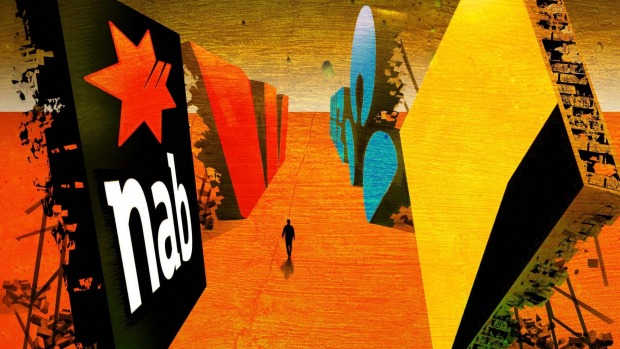The Reserve Bank of Australia will pay the big banks a billion a year in interest for money the banks have sitting in deposit. Callum Foote and Michael West look at why the RBA has chosen to start paying interest on almost half a trillion dollars sitting in its settlement accounts.
It was lovely to see Australia’s biggest bank, the Commonwealth deliver such a handsome profit this week, some $2.4b in cash profits for the third quarter, which equates to an annual take of a billion in cash. That’s profit, not revenue. Yet another milestone, yet another record smashed.
The CBA’s Big 4 banking peer Westpac had only just handed down its half yearly $3.1bn profit. All four banks, of course, were mighty quick off the mark to pass on the 0.25% hike in the Reserve Bank’s cash rate the other day. None of this dilly-dallying which occurred on the way down when the central bank would cut rates and the Big Four would play chicken to see who could pass on the rate cut last.
Despite their stratospheric profits, their economists are tut-tutting about proposals for meagre $1 per hour wages rises which would save low-income Australians from further wage stagnation.
In any case, the banks are cleaning up, they always do. And the Reserve Bank is being unusually charitable to them by offering to pay them interest on the $406bn they have sitting on deposit in their Exchange Settlement Accounts (ESAs).
That’s another $10bn a year in interest payments to feed the bottom line and keep shareholders happy with their juicy franking credit subsidies on top.
We will get to the why and wherefore of this largesse shortly for those who are keen to find out more about mega-freebies.
Some broader perspective first. Inflation has taken off and interest rates are on the rise. This of course puts many Australians in a tricky position because they have been flogged a lot of credit in recent years as rates hit record lows. Hundreds of thousands of new homebuyers will never have experienced rising rates.
The point is, it could get nasty. Australia has among the highest levels of household indebtedness in the world ($3.1trillion) and that leverage puts the whole housing market at risk.
Who knows how high rates will go? Nobody. There is no reason inflation cannot go to 10% and the cost of mortgages could double. Rates may well spike and fall again. This is all high conjecture. What is reasonable conjecture however is that the government will always protect the banks and the stability of the financial system.
A mother of all bailouts?
That means bailout. They hate to talk about all this. They pretend to be good little capitalists operating in a competitive environment but the reality is that, unlike small businesses, the banks are a protected species. They cannot go bust because their risk is underpinned by us, the taxpayer.
That means that if the housing market were to crash, sparking mass mortgage defaults, the government would ride to the rescue of the banks, home owners and negatively geared investors and bail the lot out. Housing is the biggest market in the country and the government would not just “leave it to capitalism” in the event of a rout.
They like to pretend this is a free market but it’s not. They like to cling to the neo-liberal narrative that the private sector knows best, that governments should not interfere but that’s just posturing by vested interests.
During the Global Financial Crisis, the government intervened with a raft of protection mechanisms, guaranteeing deposits, debt issues (sovereign guarantees), even setting up the (don’t call it a bailout fund) Committed Liquidity Facility bailout fund.
The banks don’t like to talk about it because it is easier for bankers to pay themselves a lot of money if they pretend they are not really backed by the government.
An even bigger bailout
Since then of course, we have seen that the government is prepared to bail out thousands of companies, not just banks. That’s the $80bn JobKeeper subsidy. So, we are well and truly living in the age of state-sponsored corporate socialism where a raft of the very largest institutions in the country are backed by the government; too big to fail.
To the latest lurk then. There is almost half a trillion dollars, owned by big banks, sitting on deposit, with the RBA. The banks are not lending it but rather leaving it with the RBA which is now paying them a billion a year to hold onto it.
Alongside raising the cash rate by 25 basis points from 0.1% to 0.35%, the RBA also increased the amount of interest it would pay on the $406 billion big banks have deposited in its Exchange Settlement Accounts (ESA).
(Just for perspective, that $406bn is roughly approaching half of the nation’s net debt).
Exchange settlement accounts are used by the commercial banks to make payments to each other. Before 2020, the sum of ESA balances rarely exceeded $3 billion according to RBA statistical tables, but since these accounts have seen a massive increase in the amount of money held in them.
Since the pandemic the RBA has used these same accounts for Covid-related stimulus to the banks. This has led to the banks leaving amounts of money in these accounts equal to half of the Australian government debt sitting in these accounts doing nothing.
The RBA has now decided to start paying interest of 0.25% on the money in these accounts. While seemingly insignificant, there is currently $406 billion deposited in these accounts meaning the RBA will be paying over $10 billion a year in interest to these banks.
Why so much on deposit?
Why have the banks put so much money in the ESAs?
In early 2020, the RBA launched the Term Funding Facility (TFF), as part of the response to the effects of the pandemic and permitted the central bank to loan $188 billion to Australian banks at around 0.1% interest.
This cheap loan was intended to give the banks the ability to continue to loan out to the economy at large which didn’t need to be paid back till 2023 and 2024. This ensured that the banks could keep lending at low rates throughout the pandemic.
However, the banks that received money under the TFF left this money with the RBA for safekeeping in their ESAs, earning nothing.
A finance expert told MWM that banks have been loading up their ESAs for two reasons. One, there may not have been enough good customers to whom to lend money. The big credit-worthy borrowers, corporations and the likes, have already loaded up with oodles of cheap capital at low rates.
Two, prudential regulation requires that banks can only lend up to a certain multiple of specified assets to stop them from lending out far more than is responsible. Luckily enough, the money held in ESA accounts counts towards the specified assets held by banks, meaning the more they hold in ESAs the more they can lend out to everyday Australians and companies if they choose to.
Good for the goose, good for the gander
What reasons could the RBA have to pay interest on these accounts?
According to an RBA spokesperson, in an April meeting RBA board members agreed to “maintain the current margin of 10 basis points between the interest rate on Exchange Settlement balances and the cash rate target”.
What this does in effect, according to financial experts, is raise the risk premium on top of risk-free rate, pushing up interest rate across the whole economy.
First, if a bank knows it can make 0.25% risk-free interest on any money it deposits into its ESA, where before it was making zero, then it would naturally want to charge its riskier customers extra.
By raising the ESA interest rate the RBA has increased the floor for economy wide lending, working in tandem with the central bank’s new cash rate target. Ex-RBA deputy governor Guy Debelle said publicly before the Senate that the amount payable on these ESA was effectively the risk-free interest rate.
Further, the RBA might have had in mind that the $188 billion now earning some free kick interest, would mean that banks would ease off on passing the full cash rate increase onto their customers if the banks knew that they would be getting some extra “free” money in the door in the form of ESA interest.
These hopes were dashed by around 7pm the night the RBA lifted rates last week when three of the Big Four had already passed on the full 0.25% with NAB following suit the next morning.
What we we expect then when the RBA raises rates again in June? That they will go easy on their customers because the RBA is giving them free money? Not likely. The charade that these are free enterprises will continue and they will lock in what they can because the more the bankers make for shareholders, the more they make in bonuses too.
As for households and their mortgages, you can rest assured that Australia’s sacred mortgage market will be protected in the event of disaster. You won’t hear anybody saying it but this is the quintessential sacred cow. The implications over the long term, though, of this protectionism are that younger working Australians will be on the hook for the follies of their former generations. Just like climate change.
Callum Foote was a reporter for Michael West Media for four years.

